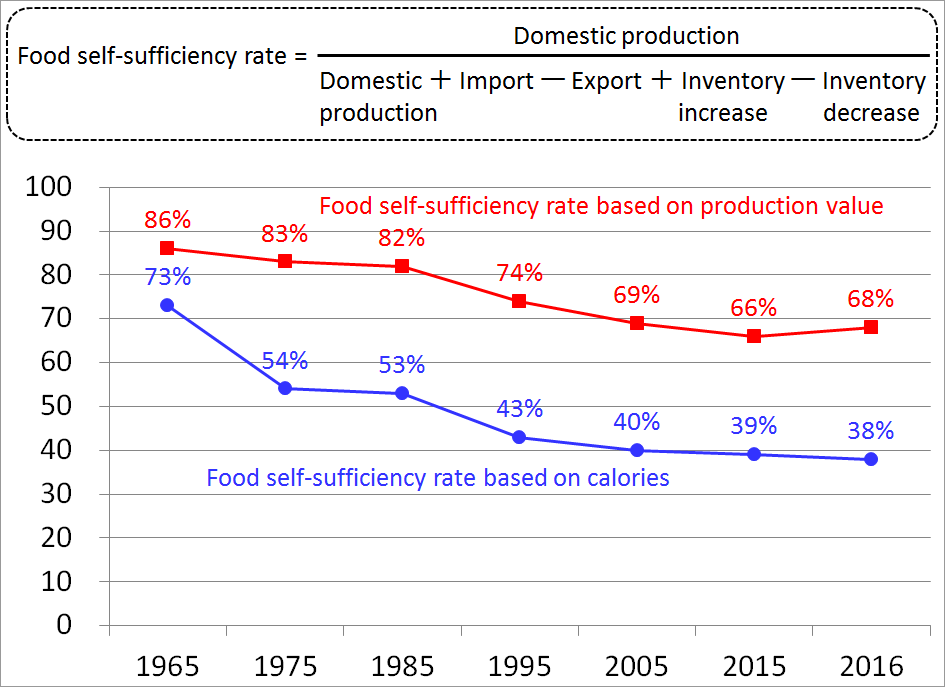Column Finance and the Social Security System 2018.05.29
【Aging, safety net and fiscal crisis in Japan】No.118: Food Self-Sufficiency Rate
When thinking about the safety net for Japanese people, a food self-sufficiency rate is important. The food self-sufficiency rate is an index showing how domestic agricultural production covers much domestic food consumption. There are two definitions, a food self-sufficiency rate based on the production value and a food self-sufficiency rate based on calories. Figure 1 shows the calculation formula and the historical trend.
According to the Ministry of Agriculture, Forestry and Fisheries, the food self-sufficiency rate based on the production value declined from 86% in 1965 to 68% in 2016. The food self-sufficiency rate based on calories dropped further from 73% to 38% during the same period. The ministry also released international comparative data. As shown in Figure 2, Japan's food self-sufficiency rate is the lowest among developed countries. This suggests that, if there is a sharp depreciation of the yen triggered by financial collapse and so on in the future, this will be a major obstacle to food security.
Figure 1: Trend of food self-sufficiency rate

Source: Ministry of Agriculture, Forestry and Fisheries
Figure 2: International comparison of food self-sufficiency rate

Source: Ministry of Agriculture, Forestry and Fisheries
